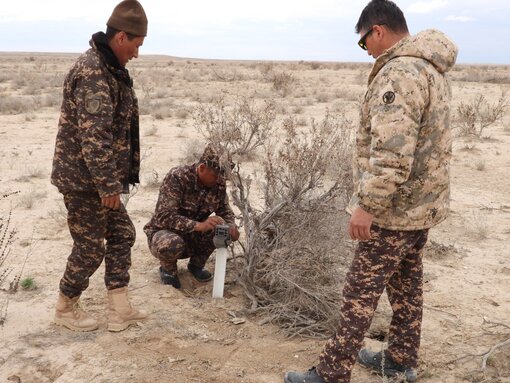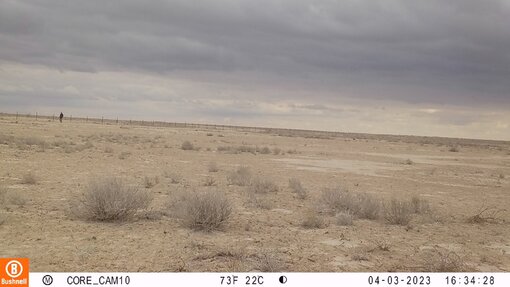With the help of the monitoring, a comprehensive data basis is to be created in order to analyze the influence of the border fence on the migration and movements of ungulates. The installation of the 10 camera traps was preceded by a complex approximately 6-month approval process.
Southern Ustyurt has high importance for the conservation of transboundary herds of Ustyurt urials (Ovis vignei arkal), Asiatic wild asses (Equus hemionus kulan) and goitered gazelles (Gazella subgutturosa). The wire fences built along the border by the Republics of Kazakhstan and Turkmenistan have a significant impact on these ungulates, preventing their natural migration and movements.
The Succow Foundation is currently working with GIZ and national partners to improve transboundary conservation cooperation in the Southern-Ustyurt border area between Kazakhstan, Turkmenistan, and Uzbekistan as part of the “EcoAral” project. Based on the camera trap data obtained, recommendations are being elaborated to mitigate the impact of border barriers on cross-border migration of ungulates.
During an exchange of stakeholders from Kazakhstan, Turkmenistan, and Uzbekistan in May, a roadmap for further development of transboundary cooperation will be developed.
![[Translate to EN:] Banner Stiftung](/fileadmin/_processed_/b/c/csm_banner-stiftung_fee6c1c492.jpg)

